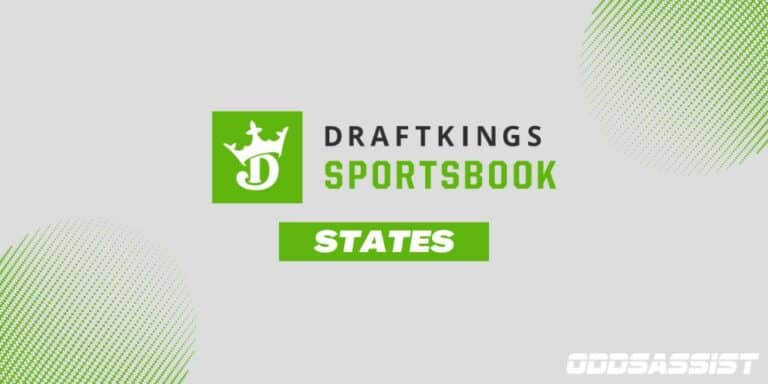Companies featured on this page may be our partners who compensate us if you sign up for one through our links. This doesn't affect our ratings or opinions in any way. Must be 21+. Gambling Problem? Call 1-800-GAMBLER. See full disclosure.
In sports betting (and sports in general), a favorite is the team or side of a wager that has the highest chance of winning.
For example, if the Eagles (-150 moneyline odds) are playing the Cowboys (+130 odds), the Eagles would be the favorite since you win less money choosing them to win. You can learn more about reading betting odds here.
Whichever team has the negative sign in front of their moneyline odds is typically the favorite. If both teams have negative signs, such as -115 and -105, whichever team has more negative odds is the favorite.
When it comes to point spreads, the favorite is whichever team has a negative in front of its spread. In the same example above, the Eagles may be -3.5 favorites (meaning they have to win by 4 points or more to win the bet), whereas the Cowboys are +3.5 underdogs, since they are “getting” 3.5 points added to their final score.
How are favorites determined? Should bettors select the favored team in most bets? These are fundamental questions bettors must answer before confidently placing their wagers.
How Sportsbooks Determine the Favorite
Bookmakers use multiple items to determine which team has the better chance of winning a given contest. The oddsmakers will look at overall records of each team, common opponents, and advantages or disadvantages each squad faces. Injuries, poor performance history, and location of the contest are some of the many considerations that go into setting odds.
If the last-place team in the NBA plays the first-place team, the presumed favorite would be the first-place team. Yet if two teams that rank in the middle of the NBA face off, where the contest is played as well as injuries either team is currently dealing with could determine which team should be considered the favorite for the contest.
Once the presumed winner (or favorite) has been determined, oddsmakers provide odds for the moneyline—a straight bet for the team to win the contest.
Further, the bookmakers will estimate how many points each team will score and provide points spreads (difference between the final score for each team) and an over/under points total for the game’s final score.
How Odds Indicate Which Team is Favored
Multiple different odds formats exist in today’s betting landscape. Although most online sportsbooks in the U.S. use American odds, there are also Fractional and Decimal odds formats.
American odds system: This is probably the most common (and potentially confusing) for new bettors to decipher. Favorites are listed as negative numbers, and underdogs are listed as positive numbers. Favored teams might appear with -150 odds, meaning that in order to win $100 off the bet, the bettor must risk $150. Underdogs are the opposite; betting on a team with +150 odds will yield $150 for every $100 on a successful bet.
Fractional odds system: This is probably the most common odds system outside of America. Favorites are listed with the denominator (second number) as larger than the numerator (first number) while underdogs would be the reverse. Favored teams might appear with 1/2 odds, meaning that in order to win $100 off the bet, the bettor must risk $200. Conversely, underdogs will appear with 2/1 odds, meaning that for every $100 wagered on this bet the individuals will profit $200.
Decimal odds system: This is probably the easiest betting system to understand. Favorites are listed as smallest numbers while underdogs are listed as the larger number. To calculate how much a winning bet would yield, the bettor simply multiples the amount wagered by the decimal odds. For example, odds of 1.75 on an underdog would yield $175 per $100 bet. Favorite odds of 0.63, on the other hand, would yield $63 on a $100 bet.
Should I Only Bet the Favorite?
While betting the favorite for a straight or moneyline bet may seem like a winning proposition, that is not always the case. Games with presumed easy outcomes—when top-ranked teams play against bottom-ranked teams—have extremely low payouts for winning bets.
Since the payouts are lower, you may lose money even if you win 3 out of 5 moneyline bets, for example. Just one losing bet on a heavy favorite can cause you to lose money overall.
For example, say you bet $100 on five moneyline bets with the following odds and results:
- Game 1 WIN: -150 odds = $66.67 profit
- Game 2 LOSS: -250 odds = $100 loss
- Game 3 WIN: -300 odds = $33.33 profit
- Game 4 LOSS: -700 odds = $100 loss
- Game 5 WIN: -1000 odds = $10 profit
Your net winnings from those five bets would be -$90.
You can see from the example, that even though you hit the majority of your bets, the losses from the two losing wagers results in a net loss.
Whether or not betting just favorites also is a good strategy varies a lot by sport, as well.
One sport where betting the favorite is profitable has been professional men’s tennis. Betting data from the 2010s showed that men’s tennis most-often produced a favorite as the winner of major tournaments, thanks to dominant players like Rafael Nadal and Roger Federer winning major events.
The NBA is second on the list of sports with favorites winning a high percentage of games. While the teams have changed each season, the franchises that win the championship are often helmed by generational talents that are among the league’s best squads.
Still, just blindly betting favorites is rarely a good idea. This is especially true when it comes to spread betting. In the 2022 NFL season, for example, underdogs in spread bets have been winning at a much higher clip than favorites.






